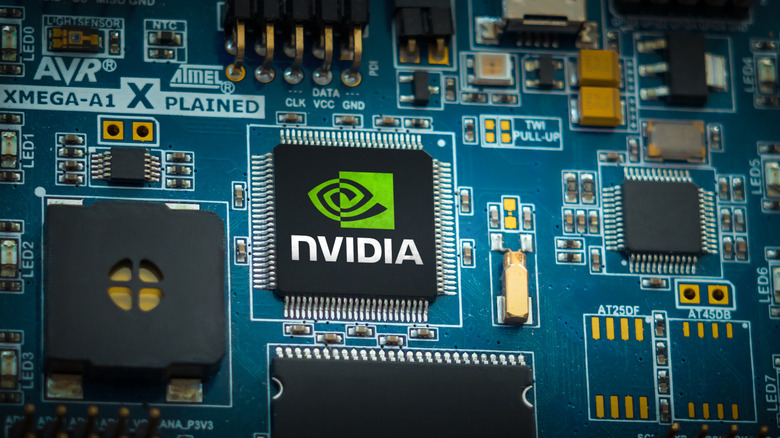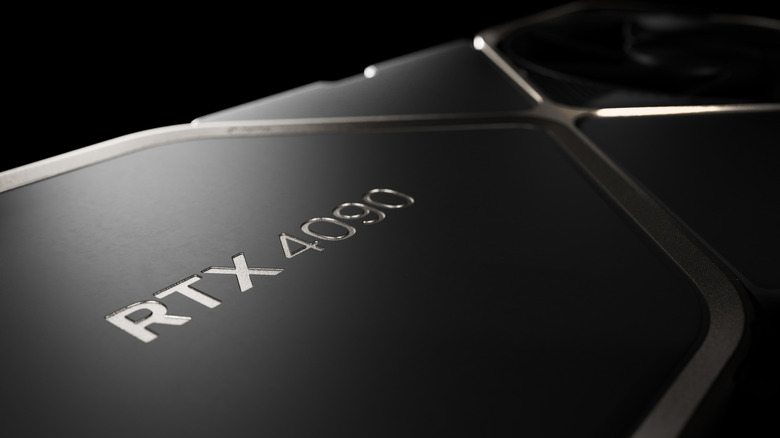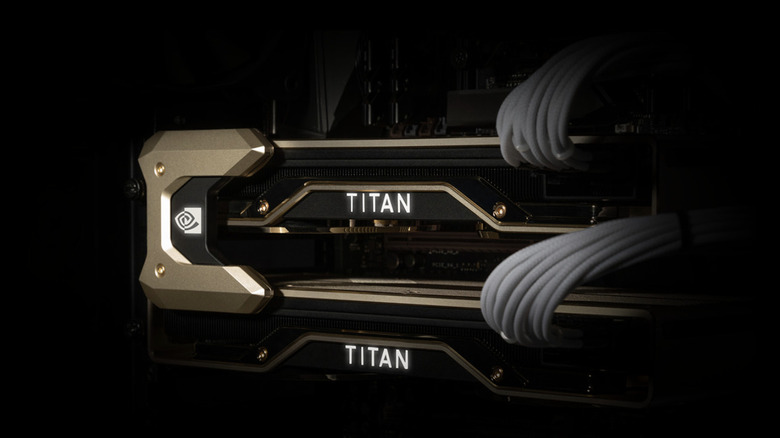Why Nvidia Discontinued The 'Titan' Graphics Card Line
Nvidia's Titan graphics cards were an industry-lauded lineup that any PC gamer would be thrilled to have running alongside their CPU and other peripherals. Once hailed for extreme power and versatility, the Titan family brought near-GeForce-levels of performance to the table, on top of delivering chart-topping VRAM supplies that put the Titan on almost the same level as Nvidia's Quadro cards.
But after the Titan RTX hit the market in 2018, Nvidia pulled the plug on the Titan series altogether, marking the end of an era. Why would Nvidia do such a thing, you may be asking? The quick answer is that Nvidia wanted to make it easier for consumers to choose a GPU that best fits their needs. Post-2020, Nvidia had a dizzying array of cards to choose from — including the GeForce, Titan, and Quadro — and there was a lot of overlap in price and performance between all these models.
The Titan served as a kind of hybrid GPU that delivered many of the same specs as the GeForce RTX — which is short for Ray Tracing Texel eXtreme — Quadro, and Tesla options, which made choosing the right card more challenging for gaming enthusiasts and those looking for datacenter deliverables. So, by sweeping the Titan under the rug, Nvidia was able to simplify its product line and give each brand a more explicit purpose.
Nvidia's Titan lives on through RTX GeForce and A-Series cards
We mentioned that the final card in the Titan lineup was the RTX model, released in 2018. When you put that GPU side by side with the GeForce RTX 3090 from 2022, you'll notice a number of similarities, especially as far as VRAM capacity and Thermal Design Power (TDP) are concerned.
With just a slight difference in power generation (the Titan RTX pushed up to 280 watts, while the 3090 pushes 350 watts), and the fact that both cards handled up to 24GB of VRAM, the RTX and 3090 both delivered high-end gaming performance and the kind of prosumer horsepower you'd get with a workstation GPU.
By the time the RTX 4090 landed on shelves in 2022, Nvidia had effectively blurred the line between a consumer graphics card and a professional computer powerhouse. Today, the RTX 4090 and 5090 stand as the new gold standard for gaming enthusiasts. And then there's Nvidia's A100 and B200 GPUs, which represent the tip of the Nvidia iceberg as far as raw computational power and machine learning go.
The discontinued Titan RTX has still got what it takes
Nvidia's 2018 Titan RTX is an aging graphics card that could be easily sped-up for use with modern PC titles like Doom: The Dark Ages, albeit with a few graphical tweaks to optimize performance — especially when it comes to ray-tracing and shadow effects. This just goes to show that some of Nvidia's legacy products have an outstanding shelf life, allowing older cards like the Titan RTX to deliver solid performance for resource-heavy PC games and other software seven years later.
The adage "If it ain't broke, don't fix it" is at the root of Nvidia's longstanding presence in the GPU marketplace, although a more fitting phrase might be, "If it ain't broke, enhance and rebrand." While the Titan RTX is no more, its historical power and performance live on through Nvidia's modern flagships like the RTX 5090, A100, and B200. So, the next time you're playing a GPU-hungry PC game, and your Nvidia Ti (short for Titanium) graphics card is chugging along happily and silently alongside your CPU, you can thank the Titan.


